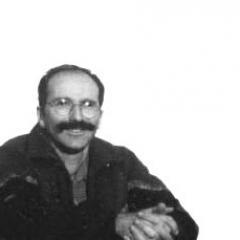|
List of Maps ....................viii
List of Plates ...........ix
List of Colour Photos ...........x
Foreword by Michael Henss.xvii
Preface ............xix
List of Abbreviations ...........xxii
Introductury Notes on the Cultural Monuments in Amdo ..........1
Introduction to Tibet's Cultural Provinces Amdo and Kham . ......5
Part 1. Northeast and Eastern Tibet: settlement pattern and current political divisions.........7
Part 2. Amdo . ..........10
2.1. Derivation of the toponym 'Amdo' ......................................................11
2.2. A historical sketch of Tibet's Amdo region ............................................12
2.3. Highlights of Amdo culture ............16
The Qinghai Part of Amdo
1. Kumbum Jampa Ling ...........21
2. Lamaseries in Tsongkha (Valley of Onions) ...........27
2.1. Qutan Monastery ..................27
2.2. Rgolong Monastery.. .............31
2.3. Serkhog Monastery(Guomang ..........36
2.4. White Horse Temple of Martsang Drag...................................................38
2.5. Shyachung Lamasery (Bya Khyung) ......................................................39
2.6. Monasteries in Tsongkha ..............................................................42
2.6.1. Dafo Si - Temple of the Big Buddha ....................................................43
2.6.2. Chubsang Gompa ........................................................................44
2.6.3. Minhe County (Kamalok): Lenlhate Ganden Ling, Thangring Gön,
Khatekha Gön, Tsheten Gompa, Ushidrag Ling..........................................45
2.6.4. Ledu County (Drotshang): Drotshang Tashilhünpo,
Tongshag Tashi Chöling .............................................................46
2.6.5. Ping'an County (Tsongkha khar): Shadzong Ritrö.........................................46
2.6.6. Huangyuan County (Tongkhor): Tongkhor Gompa, Dratshang Gön.............................47
2.6.7. Subsistence means of monasteries and social situation in Tsongkha......................48
3. Rongwo Monasteries and Rebgong Art .........................................................51
3.1. Rongwo Gonchen .......................................................................51
3.2. Wutun: the area and monasteries ......................................................53
3.2.1. Senggeshong Yago Gompa ................................................................54
3.2.2. Senggeshong Mago Gompa ................................................................54
3.2.3. Nyenthog Monastery ....................................................................54
3.2.4. Gomar Monastery .......................................................................55
3.3. History and features of Rebgong art ..................................................55
3.4. Monasteries of the Yellow River bend .................................................58
3.4.1. Dentig Monastery ......................................................................59
3.4.2. Xunhua County (Dowi): Gori Dratshang, Dama Jomo Nunnery,
Bimdo Gönchen ......................................................................62
3.4.3. Jainca County (Centsha): Achung Namdzong, Kouwa Monastery,
Lamo Dechen ........................................................................64
3.4.4. Guide County (Thrikha) & Guinan County (Mangra): Minyag Dratshang,
Gongba Dratshang ...................................................................67
3.5. The Sutra Walls of Hor ..............................................................................69
4. Lamaist Sites of the Amnye Machen Region ..............................................73
4.1. Amnye Machen: Holy Mountain and Pilgrimage Circuit ...............................73
4.1.1. The pilgrimage crcuit ..................................................................................74
4.1.2. Guri Monastery ..........................................................................................75
4.2. Ragya Monastery .......................................................................................75
4.3. Tsanggar Gompa ........................................................................................78
4.4. Sogwo Arig - Mongols in the Ma Chu bend ................................................80
4.4.1. Lakha Gön .................................................................................................80
4.4.2. Serlung Gompa ...........................................................................................80
4.4.3. Chögar Gön ...............................................................................................80
4.4.4. Shingsa Gön ...............................................................................................81
4.5. Yarmothang and Bayankara Mountains: Monasteries ...................................81
4.5.1. In the Grasslands of the Yarmothang: Tshowar Karche Dokha,
Horkor Gön ..............................................................................................81
4.5.2. The realm of the Bayankara Mountains .......................................................82
4.5.3. Gande County (dGa' bde): Lungngön Thubten Chökhor Ling ......................82
4.5.4. Darlag County: Thraling Gön ....................................................................83
4.5.5. Cigdril County (gcig sgril): Peyül Monastery ..............................................84
4.6. Pema - Home of the wild Ngolok tribes ......................................................85
4.6.1. Dogongma Gompa .....................................................................................86
4.6.2. Cagri Gompa .............................................................................................86
4.6.3. Achonggya Monastery ...............89
4.6.4. Gyüde Gompa ...............................90
4.6.5. Dodrubchen Monastery ....................90
5. Kokonor Region and Tsaidam Basin ............................................................91
5.1. Chabcha and south Kokonor area ..............................................................91
5.1.1. Drakar Treldzong Thösamling .....................................................................91
5.1.2. Thege Dargyeling .......................................................................................92
5.1.3. Chamru Monastery ....................................................................................93
5.2. The realm of sacred lake Kokonor ............................................................93
5.2.1. Tshonying Island ........................................................................................93
5.2.2. Satho Ganden Monastery ...........................................................................94
5.2.3. Kangtsha Gönchen .....................................................................................94
5.2.4. Lamo Garthog ...........................................................................................95
5.3. Mongolian monasteries and temples of the Tsaidam Basin ...........................96
5.3.1. Tulan Monastery ........................................................................................97
5.3.2. Ahandalai Monastery .................................................................................98
5.3.3. Panchen Shingde Gompa ...........................................................................99
5.3.4. Tshaka Monastery ...................................................................................100
5.3.5. Pekhokhö Monastery ...............................................................................100
5.4. Qilian Shan area & Lamaist Grotto Art on the Silk Road margin ................100
5.4.1. Semnyi Monastery ...................................................................................101
5.4.2. Ganglong Shiku Si ....................................................................................101
5.4.3. Drugu Gompa ..........................................................................................102
5.4.4. Qilian County (Chilen): Pehu Gompa, Arig Ganden Chöphel Ling .........102
6. Relics of Non-Buddhist origin .....................................................................105
6.1. Ruins of the ancient Hor Kingdom ............................................................105
6.2. Ming-dynasty walls and fortresses ............................................................106
6.3. Ruins of other ancient civilizations in Amdo ...............................................107
6.3.1. Liuwan Graves and Museum ....................................................................109
6.3.2. Xihai Jun Old Forts ..................................................................................109
6.3.3. Fusi Cheng ..............................................................................................109
6.3.4. Dulan Tubo graves ..................................................................................109
6.3.5. Heigucheng and other Tang dynasty forts .................................................109
6.3.6. Tiechengshan gucheng .............................................................................109
6.3.7. Old trade-routes .....................................................................................109
6.4. Mosques ................................................................................................110
6.5. Prehistoric Rock carvings ........................................................................110
Photographs .......................................................................................................111
Map Section ......................................................................................................199
Notes ................................................................................................................211
Bibliography ......................................................................................................231
Glossary ............................................................................................................241
Index-gazetteer ..................................................................................................251 |
|

Born in 1960, Andreas Gruschke lives and works in the southwest German city of Freiburg. 1982 to 1990 studies in geography, ethnology (cultural anthropology) and sinology at universities in Aachen, Freiburg and Beijing (1984/85). Work as a lecturer at Shanxi Agricultural University in Taigu, Shanxi, PRC (in 1985/86), and at Kangweon National University in Chuncheon, South Korea (1992/93). Beginning in 1987 repeatedly guiding study tours through Eastern and Central Asia, with the emphasis put on Tibet and the Silk Road. During numerous private stays the author continued research on Tibetan culture, with a particular view to the ethnic development and the relationship between the different peoples in contact. Altogether, he has been more than 30 times to the various parts of the Tibetan realm, thus having travelled some 80,000 km all over the highland, from Ladakh and Western Tibet, several Tibetan areas in the Himalayas, southern and central Tibet, the vast steppes of the Changthang in the plateau's heart up to almost every area in Amdo and Kham in the East. His publications therefore mostly deal with Tibetan culture, including picture albums on Tibet, books on the oral tradition of the Tibetans and articles on ethnography, history and society. |




 The Cultural Monuments of Tibet's Outer Provinces: Amdo
The Cultural Monuments of Tibet's Outer Provinces: Amdo
